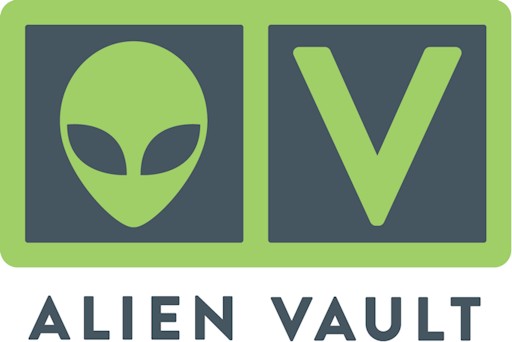
One of the things that advisors and consultants do, as part of our journey to get our clients to comply to PCI-DSS is the inevitable (and unenviable) task of dealing with vendors. A vendor can be classified as anyone or any company that is selling a service or a product to our client, that directly or indirectly relates or affect their PCI-DSS compliance. Examples include firewall vendors, encryption technology vendors, HSM vendors, server vendors, Virtual solution vendors, SIEM vendors, SOC providers, call center solution vendors, telemarketing services, hosting providers, cloud providers and the list goes on. Having dealt with hundreds of vendors over the course of the decade we have come across all kinds: some are understanding, some are hostile, some are dismissive, some are helpful and the list goes on.
But there is always a common denominator in vendors: They all start by justifying why their product or service is:
a) Not relevant to PCI-DSS compliance (because they don’t store card data, usually)
b) Why their product is PCI acceptable (but it’s really not, or when we have questions on certain aspects of it)
It always begins with these two start points and it can then branch off into a myriad of different plots, twists, turns and endings, very much like a prolonged Korean drama.
With this in mind, we recently had an interesting call with one of such vendor, who basically runs a fairly important PCI subsystem for one of our clients. The problem was that their logs and console had two things that we sometimes find: the combination of truncated and hashed values of a credit card information, grouped together.
Now, just a very quick recap:
a) Truncated card data – This is where you see parts of the card replaced by XXXX characters (or any character) where the full card number is not STORED. Now it must be noted that TRUNCATED and MASKED are treated differently, although oftentimes confused and used interchangeably. When we say something is MASKED, it generally means the PAN (Primary account number) is stored in full but not displayed in full on the console/application etc. This applies sometimes to call centers or outsourced services where full PAN is not required for back office operations but for reconciliation or references. TRUNCATED here means even in storage, the full PAN is not present.
b) Hashed Card Data – Hashing means its a one-way transformation of card data into a hash value with no way to reverse it (Unlike encryption). If we use a SHA-256 hash algorithm on a PAN, you get a fixed result. Fraud management systems may store this hash PAN in order to identify transactions by that particular card (after hashing), and not worry about the actual card data being stored. It’s like hashing of passwords where the actual password isn’t known.
It’s to be noted, when done properly, these two instances of data may even be considered entirely out of scope of PCI-DSS. The problem here is when you have both of these stored together and correlated together, it renders the data protection weaker than just having one control available. This is probably where the concept usually gets lost on clients implementing these controls, as we have seen many times before – for example, tokenized information being stored together with truncated values.
Even PCI-DSS itself states clearly in the standard item 3.4 in the Note, that “Where hashed and truncated versions of the same PAN are present in an entity’s environment, additional controls must be in place to ensure that the hashed and truncated versions cannot be correlated to reconstruct the original PAN.”
To clarify, it doesn’t mean that it CANNOT be done, but additional controls must be in place. A further look at this is found in the Tokenization Product Security Guidelines Supplementary document:
IT 1A-3.b: Verify that the coexistence of a truncated PAN and a token does not provide a statistical advantage greater than the probably of correctly guessing the PAN based on the truncated value alone.
Further on:
…then the vendor provides documentation to validate the security strength (see Annex C – Minimum Key Sizes and Equivalent Key Strengths for Cryptographic Primitives) for each respective mechanism. The vendor should provide a truncated PAN and irreversible token sample for each.
And furthermore in Tokenization_Guidelines_Info_Supplement.pdf:
Note: If a token is generated as a result of using a hash function, then it is relatively trivial effort for a malicious individual to reconstruct original PAN data if they have access to both the truncated and hashed version of the PAN. Where hashed and truncated versions of the same PAN are present in the environment, additional controls should be in place to ensure that the hashed and truncated versions cannot be correlated to reconstruct the original PAN.
So in short, at anytime we see there are hashed values and truncated value together, we need to validated further on the controls. A good writeup is found here at another blog which summarises the issues surrounding this.
However, as our call with this particular vendor continued on, he demonstrated just how vendors should or should NOT approach PCI-DSS compliance, which sort of inspired this post:
A) DON’T place yourself as the topical expert in PCI-DSS: Don’t. Not because you are not, but because you are representing a product or a service, so you always view certain things through a lense you have been trained on. I know, because I was with vendors for many years and most of our consultants are from vendor backgrounds. He immediately started by stating, he is extremely well verse with section 3.4 of PCI-DSS (which basically talks about the 4 options of protecting card holder data stored), and that he has gone through this conversation many times with consultants. This immediately sends the QSA red flags, once the vendor starts moving away from what they know (their product) to what they may think they know but generally may not (PCI-DSS), and in general we don’t want to put the auditor on defence once vendors sound defensive. It should be collaborative. DO state clearly that we are subject matter experts in our own field and we are open to discussions.
B) DON’T recover by going ‘technical’: In his eagerness to demonstrate his opinion on PCI, he insisted that we all should know what 3.4 is about. Concerning the four controls stated in PCI-DSS (token, truncation, hashing, encryption), he claimed that their product is superior to what we are used to because his product has implemented 3 out of 4 of these controls (hashing, truncation and encryption) and he claims this makes it even more compliant to PCI-DSS. At this point, someone is going to call you out, which is what we did reluctantly as we were all staring at each other quizzically. We had to emphasize we really can’t bring this to the auditor or justify this to our client who was also on the call, as this is an absolute misinterpretation of PCI-DSS, no matter what angle you spin. PCI never told us to implement as many of these options as possible. In fact, clearly stating if more than one of these are introduced, extra care must be taken in terms of controls that these cannot be correlated back to the PAN. We told him this was a clear misinterpretation to which his response was going into a long discourse of where we consultants were always ‘harping’ on impractical suggestions of security and where we always think it’s easy to crack hashes just because we know a little bit about ‘rainbow tables’. We call this “going technical”. As Herman Melville, the dude that wrote Moby Dick puts it:
“A man of true Science uses but few hard words and those only when none others will serve his purpose; whereas the smatterer in Science… thinks that by mouthing hard words he understands hard things”. – Dude that wrote Moby Dick.
Our job is really to uncomplicate things and not to make it sound MORE complicated, because there may always be someone in the room (or video conference) who knows a little more than what they let on.
DO avoid jargonizing the entire conversation as it is very awkward for everyone, especially for those who really know the subject. DO allow input from others and see from the point of view of the standard, whether you agree or disagree or not and keep in mind the goal is common: to make our client compliant.
C) DO find a solution together. As a vendor, we must remember, the team is with the client. The consultant is (usually) with the client. So its the same team. A good consultant will always want vendors to work together. We always try to work out an understanding if vendors cannot implement certain things, then let’s see what we can work on, and we can then talk to the the QSA and reason things out. Compensating controls etc. So the solution needs to be together, and finally, after all those awkward moments of mansplaining everything to us, we just went: “OK, let’s move on, these are the limitations, let’s see where the solution is.” And after around 5 minutes or so, we had a workaround sorted out. Done. No need to fuss. So next step is to get this workaround passed by the auditor for this round and if not, then we are back again to discuss, if yes, then done, everyone is moving out to other issues. Time is of essence, and the last thing we need is each of us trying to show the size of our brains to each other.
D) Don’t namedrop and look for shorter ways to resolve issues. One of the weirdest thing that was said in the conversation after all our solution discussion was when the vendor said that he knew who the QSA was and he dropped a few names and said, just tell the QSA it’s so and so, and we’ve worked together and he will understand. Firstly, it doesn’t work like that. Namedropping doesn’t allow you to pass PCI. Secondly, no matter how long you have worked with someone, remember, another guy in the room may know that someone longer than you. We’ve been working with the QSA since the day they were not even in the country and for a decade, so we know everyone there. If namedropping was going to pass PCI, we would be passing PCI to every Tom, Dick, Harry and Sally around the world. No, it doesn’t work that way, we need to resolve the issues.
So there you have it. This may sound like a rant, but the end of the conversation was actually somewhat amicable. Firstly, I was genuinely appreciative of the time he gave us. Some vendors don’t even get to the table to talk and the fact that he did, I really think its a good step forward and made our jobs easier. Secondly, we did find the workaround together and that he was willing to even agree to a workaround, that’s a hard battle won. Countless vendors have stood their ground and stubbornly refused to budge even when PCI non-compliance was screaming at their faces. Thirdly, I think, after all the “wayang“, I believe he actually truly believed in helping our client and really thought that his product was actually compliant in all aspects. Of course, his delivery was awkward, but the intention was never to make life difficult for everyone, but to be of assistance.
At the end, the experience was a positive one, given how many discussions with vendors go south. We knew more of their solution, we worked out a solution together and more importantly, we think this will pass PCI for our client. So everyone wins. In this case, the Korean Drama ended well!
For more information on PCI-DSS, drop us a line at pcidss@pkfmalaysia.com and we will get back to you immediately! Stay safe!






